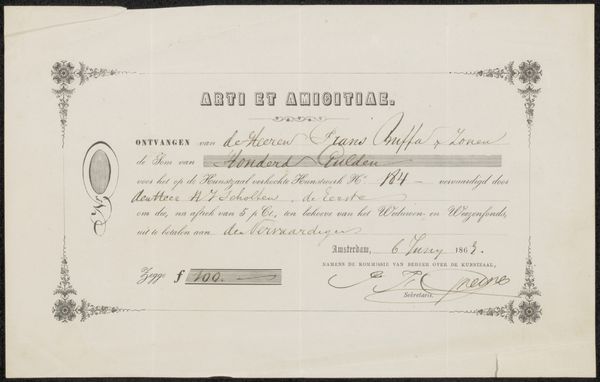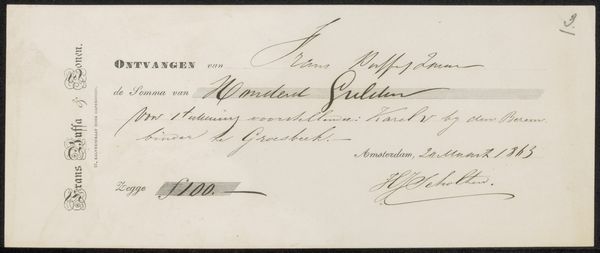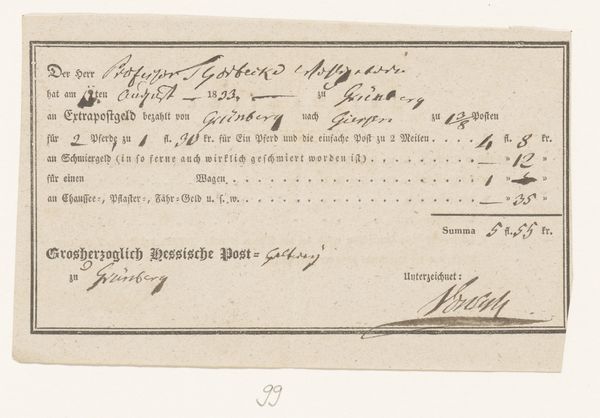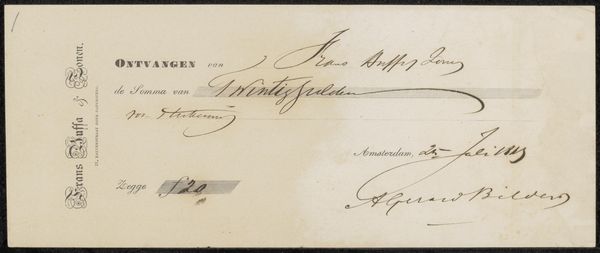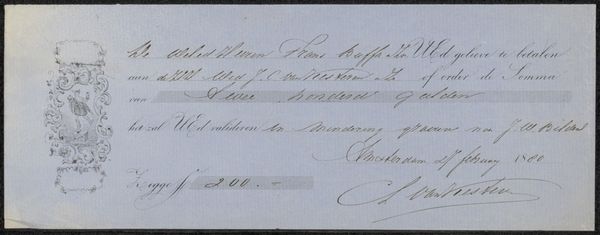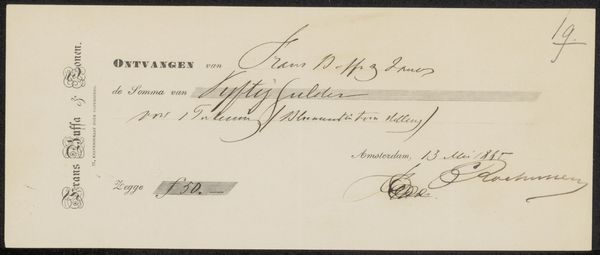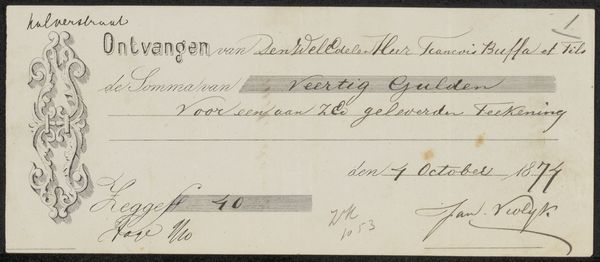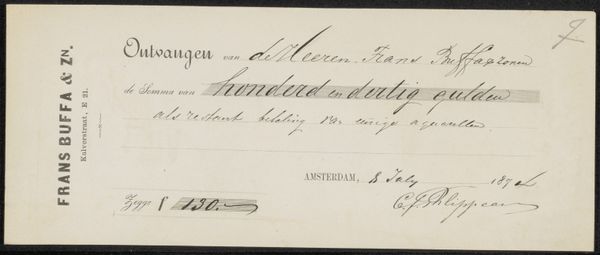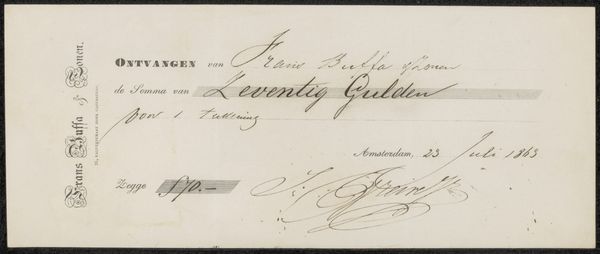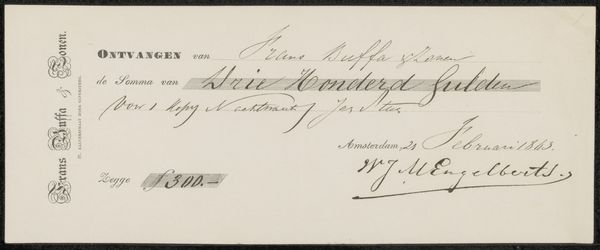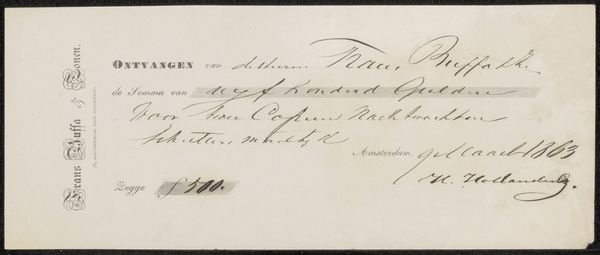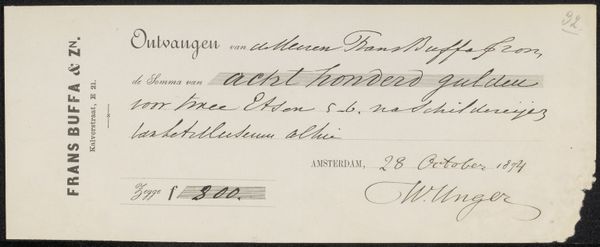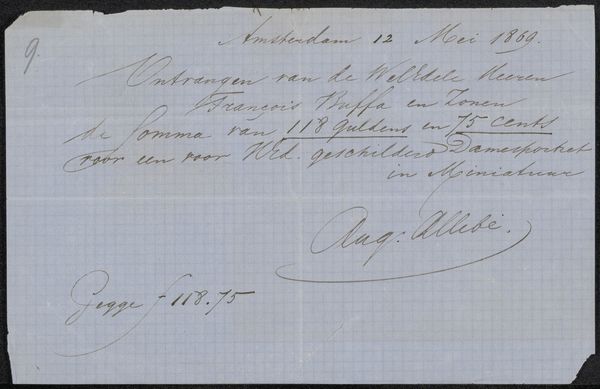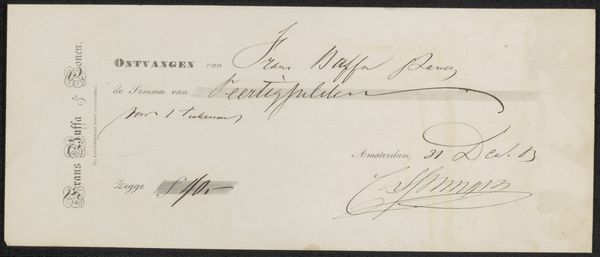
drawing, graphic-art, print, paper, typography, ink
#
portrait
#
drawing
#
graphic-art
#
16_19th-century
# print
#
paper
#
typography
#
ink
#
romanticism
Copyright: Rijks Museum: Open Domain
Editor: This is a receipt from 1846, titled "Kwitantie voor Lambertus Hardenberg," now at the Rijksmuseum. It’s rendered in ink on paper. It’s fairly unassuming at first glance, but there’s an elegant formality to it. What kind of stories do you think are embedded in its script and symbols? Curator: The formality you observe isn't just aesthetic; it's societal. Consider the symbolic weight of receipts in the 19th century. They represent transactions, yes, but also trust, obligation, and social standing. A receipt like this affirms Lambertus Hardenberg’s participation in a network – what obligations might he be fulfilling? What expectations are reinforced? Editor: That's fascinating. The receipt is for the inscription on the portrait of H.W. Couwenberg to support his 4th class in the Royal Academy of Art. Is that symbolic of patronage or community? Curator: Precisely. Think of the recurring motif of the frame; both in the document's border, and its explicit content -- paying toward the “portrait”. How does a frame mediate the relationship between subject, artist and audience? How does institutional affiliation – inscription into a class, for example – serve to frame artists? Editor: So, the symbolic language isn’t just in obvious imagery, but in the act of documenting the transaction itself, creating and enforcing relationships and the artist's “frame”? Curator: Exactly. It highlights the very human desire to create order, memorialize actions, and build a sense of belonging. Do you see the signatures at the bottom, acting on behalf of ‘the friends of the deceased’? How do their choices – or signatures – perpetuate a narrative and perhaps shape artistic legacies? Editor: I hadn't considered the receipt itself as part of a larger narrative. Thank you, I'll definitely look at these kinds of documents differently. Curator: Indeed. Every inscription tells a tale, both mundane and profound.
Comments
No comments
Be the first to comment and join the conversation on the ultimate creative platform.
